Advanced Tech Takes Stage at Paris Air Show
Electrification, digitally integrated factories, urban air mobility and more round out event’s lineup.
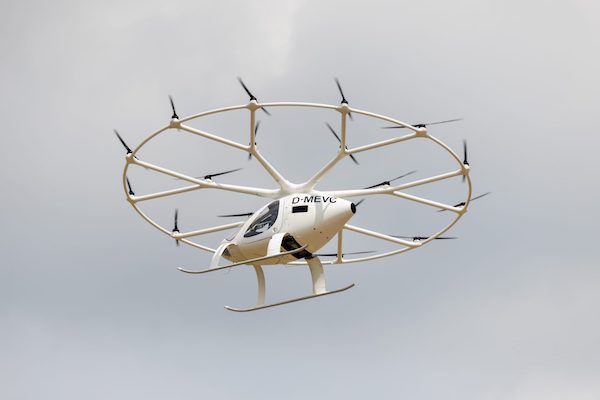
The Volocopter VC200, displayed at Paris Air Show 2023, is an early prototype of the Volocopter 2X. It is built to provide an air taxi service for congested cities and hard-to-reach destinations. Image courtesy of SIAE.
3D Printing Simulation News
3D Printing Simulation Resources
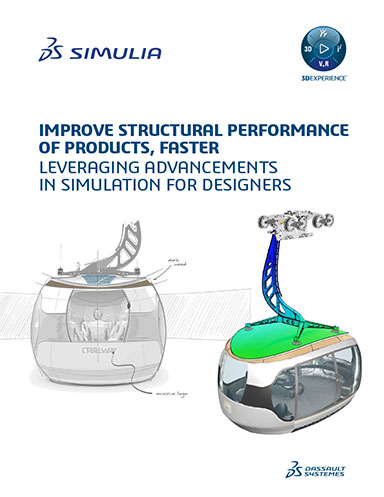
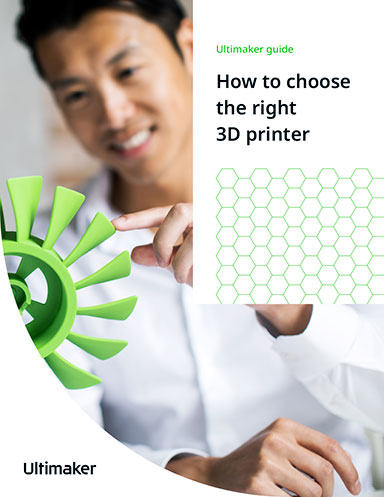
Dassault Systemes

Latest News
October 12, 2023
The aerospace industry looks to the two largest international air shows—Paris and Farnborough, UK—for insight into aircraft sales (commercial and defense) and technology trends. Major purchase announcements are covered in the business media and easy to find, while aerospace technology trends require more digging.
At the Paris Air Show in June 2023, 1,028 commercial aircraft orders were announced. Airbus received a clear majority of orders for single-aisle jets, while Boeing remained the clear leader in twin-aisle aircraft. In various presentations and briefings, supply chain disruption was on everybody’s mind.
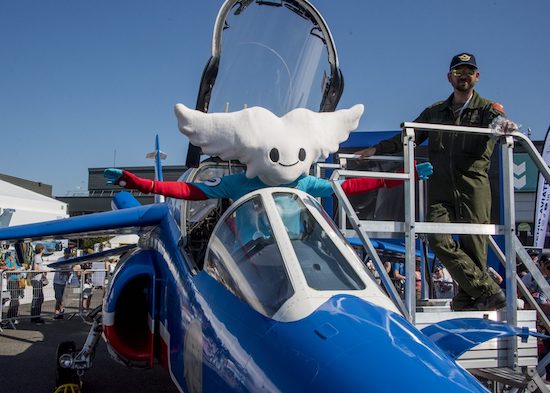
The 2023 Paris Air Show attracted 210,000 professional visitors and 170,000 general public attendees; many were children wanting to see Aleo and his Alphabet minijet. Image courtesy of SIAE.
A review of announcements and presentations at the Paris show point to continued advancement in research and development supported by the latest digital innovations. Key trends include a transformation in propulsion systems, adoption of advanced manufacturing techniques, progress toward urban air mobility and an accelerated product development workflow enabled by digital tools.
Companies including Rolls-Royce, Airbus and Boeing revealed collaborations focused on everything from high-performance engine materials to automated production lines for composites. Investments in areas such as electrification, digitally integrated factories and cloud-based product lifecycle management aim to deliver the next generation of efficient aircraft.
Sustainable Propulsion
With rising concerns about aviation’s environmental impact, aircraft manufacturers and propulsion technology firms are pushing major advancements in engine design and alternative fuels to dramatically improve efficiency and reduce emissions.
A key enabler of this drive toward sustainable propulsion is the use of high-performance computing and simulation software to accelerate development of new engine concepts. Rolls-Royce recently collaborated with Ansys and Intel to optimize its thermomechanical engine models. The company was able to decrease design cycle times and create virtual prototypes up to 100 times faster than with previous workflows by using Ansys multiphysics simulation solutions and Intel’s HPC capabilities.
Researchers are also examining new materials that can withstand higher temperatures and improve thermal efficiency in next-gen turbofan designs. Japan’s National Institute for Materials Science (NIMS) is tapping into Ansys’ materials database software to study and catalog advanced ceramics and other heat-resistant materials. By building a database tailored specifically for Japanese aerospace companies, NIMS aims to accelerate domestic development of more sustainable jet engine components.
Beyond evolving traditional jet engine technology, electrification presents a revolutionary opportunity for companies to reimagine aircraft propulsion. Startup Eviation made headlines in 2022 when its all-electric Alice aircraft successfully completed its first test flight. Alice is designed for nine passengers with a 650-mile range. Other companies exploring hybrid-electric propulsion include Airbus and Rolls-Royce through their E-Fan X program.
Advanced Manufacturing Techniques
Aerospace manufacturers are transforming production methods through increased adoption of lightweight composite materials, additive manufacturing (AM) and digitally integrated automation. These advanced techniques promise to deliver higher performance components while enabling the high volumes and rapid iteration needed for new segments like urban air mobility.
GKN Aerospace and automation firm Airborne are collaborating on a fully automated composite pre-forming line that integrates placement, trimming, forming and inspection steps. This will allow GKN to produce complex 3D composite shapes more efficiently. GKN Aerospace is also partnering with 3D printing software and services firm Materialise to advance AM, particularly for electric vertical takeoff and landing vehicles. By combining existing strengths in engineering and certification, the goal is to accelerate production of printed polymer components for flying parts.
Leveraging AM brings advantages like lighter weight and easier part consolidation. But certification hurdles have so far limited its adoption for flight-critical structures. Partnerships like GKN Aerospace and Materialise are key to maturing and qualifying these processes for aviation’s rigorous standards. Automated programming will allow more flexible and reconfigurable production lines as aircraft designs rapidly evolve.
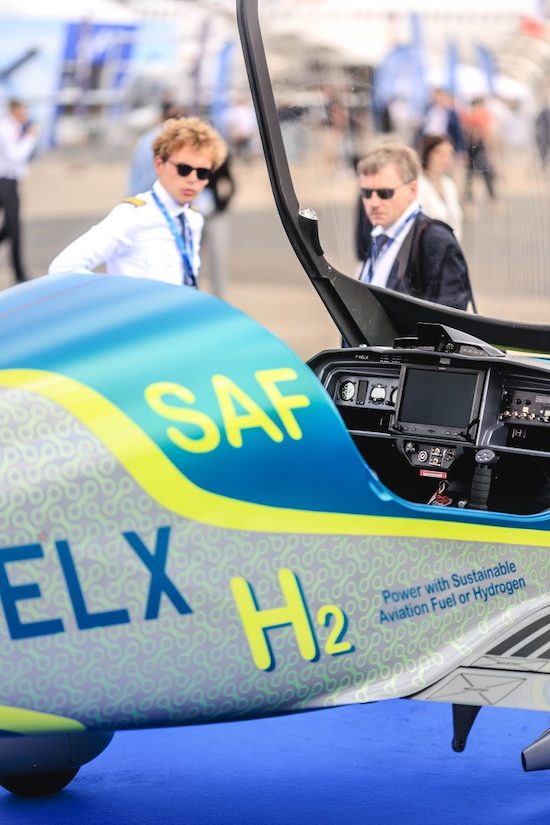 Various types of aircraft were on display at the Paris Air Show 2023 to present hydrogen as an alternative aircraft fuel. Image courtesy of SIAE.
Various types of aircraft were on display at the Paris Air Show 2023 to present hydrogen as an alternative aircraft fuel. Image courtesy of SIAE. Digitally integrated platforms are becoming more accepted by the industry, and more advanced in their ability. Dassault Systèmes provides aerospace manufacturers like SkyEye Systems with a virtual environment to collaborate across engineering and manufacturing workflows. Airborne used the Paris Air Show to discuss its automated programming tools that can translate CAD into robot instructions for composite production. Airborne calls this an example of the Dynamic Factory, where overall factory planning is continually optimized to meet delivery targets and machines follow on-the-fly instructions.
Autonomy and Urban Air Mobility
Urban air mobility (UAM) and autonomous flight are emerging technologies that aim to revolutionize personal and commercial aviation. Developing and certifying these new autonomous aircraft will require overcoming massive barriers around sensing, navigation, airspace management and safety assurance.
The partnership between Ansys and UAM airspace specialist OneSky reflect these efforts now underway. By combining Ansys’ physics modeling and sensor simulation with OneSky’s flight control systems and aviation expertise, they can train autonomous perception algorithms without costly physical tests. Their collaboration aims to streamline development and validation of autonomous flight capabilities.
Dassault Systèmes says SkyEye is using Dassault’s 3DEXPERIENCE platform to achieve certification for its lightweight Rapier X-25 surveillance drone. The integrated digital, virtual workspace is said to provide the traceability needed to meet strict airworthiness standards.
UAM also introduces airspace management demands. NASA and the Federal Aviation Administration are working to define the infrastructure and traffic control frameworks needed for widescale deployment of passenger-carrying autonomous drones. Boeing’s Aurora Flight Sciences is one company aiming to help automate and integrate UAM traffic coordination.
Safely and efficiently scaling the UAM ecosystem will require extensive buildout of ground infrastructure, manned-unmanned integration and spectrum availability. Partnerships focused on simulation, automation and cloud-based development aim to solve these challenges and certify autonomous, passenger-rated aircraft within the next 5 years.
Accelerated Product Development
Facing pressure to quickly deliver more sustainable and capable aircraft, aerospace companies are embracing digital transformation to compress development timelines. By integrating new technologies like digital twins, cloud collaboration and AM, they aim to boost speed and agility.
As complexity grows, new aircraft programs can involve hundreds of distributed suppliers. Cloud platforms streamline coordination while avoiding lengthy integration of different CAD, product lifecycle management and enterprise resource planning systems.
Digital twins are virtual replicas that integrate detailed product data across disciplines to mirror a design’s real-world performance. Cloud-based environments provide integrated access to simulation tools, compliance workflows, manufacturing planning and other processes.
AM is another catalyst for accelerated product development, enabling rapid prototyping of 3D-printed parts for design testing. GKN Aerospace is using technology from Materialise to expand AM techniques into volume production. By reducing lead times versus traditional manufacturing, 3D printing unlocks agility.
Randall S. Newton is principal analyst at Consilia Vektor, covering engineering technology. He has been part of the computer graphics industry in a variety of roles since 1985. Contact him at DE-Editors@digitaleng.news.
SAF hydrogen plane.jpg:
Various types of aircraft were on display at the Paris Air Show 2023 to present hydrogen as an alternative aircraft fuel. Image courtesy of SIAE.
More Ansys Coverage
More Dassault Systemes Coverage

More Materialise Coverage
Subscribe to our FREE magazine, FREE email newsletters or both!
Latest News
About the Author
Randall S. Newton is principal analyst at Consilia Vektor, covering engineering technology. He has been part of the computer graphics industry in a variety of roles since 1985.
Follow DE



